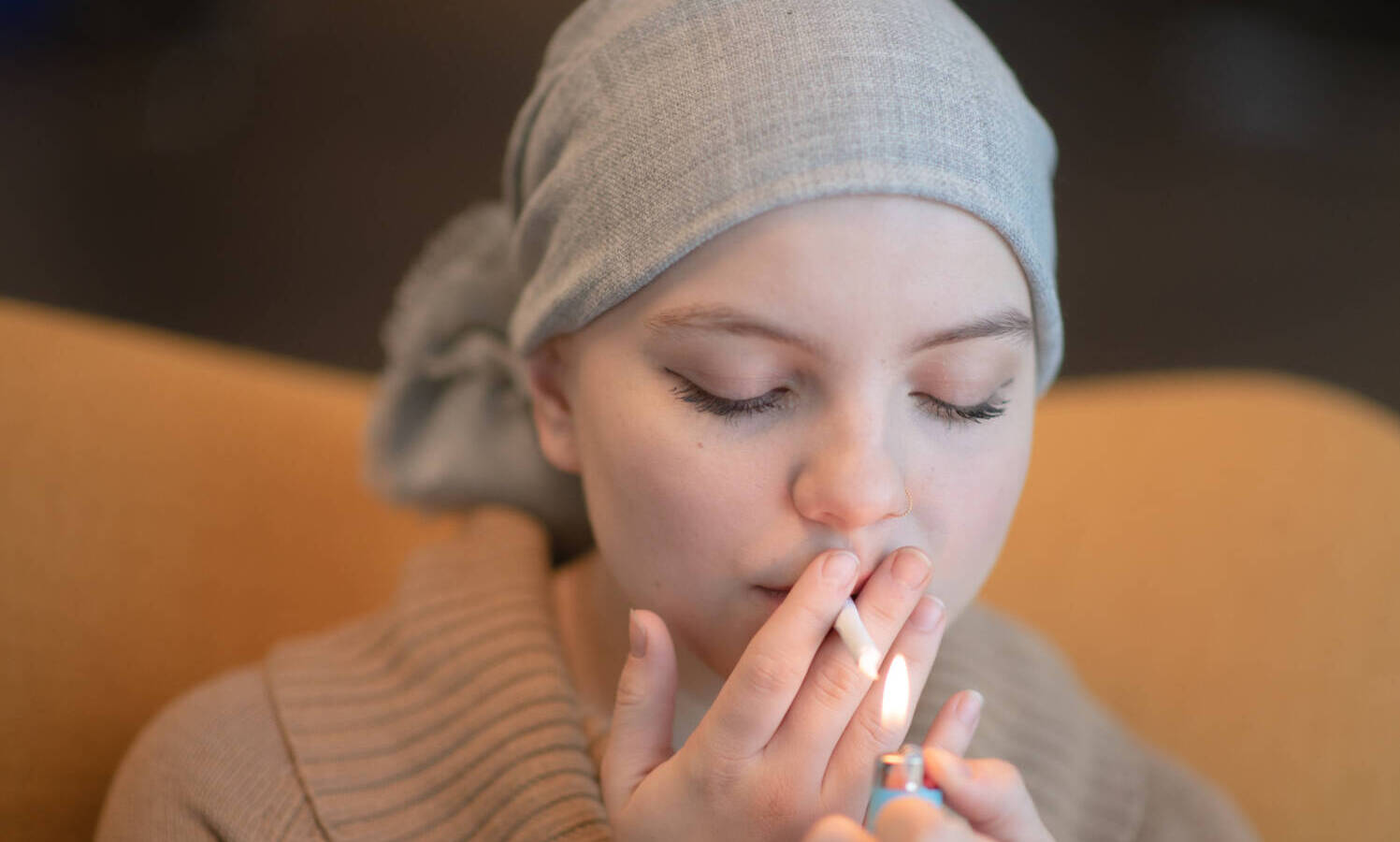
Although there is limited data to support the use of cannabis as a first-line treatment in cancer-related symptoms, many patients are consuming it to relieve the anxiety, pain, nausea and insomnia that often come with a cancer diagnosis and subsequent chemotherapy treatment.
In a 2021 study, 42% of breast cancer patients reported using cannabis for symptom relief. Seventy-eight (78%) percent were using it to help with pain, 70% were using it for sleep, 57% were seeking help with anxiety, and 46% were using it for nausea and vomiting.
The study also found that only 39% of the participants discussed their cannabis use with their physicians and when they did, it was being initiated by the patient 76% of the time. Even more concerning, the study found that only 4% of respondents listed their physician as the most helpful source of information on cannabis. Instead, they found the internet, family members, and dispensary staff to be the more helpful sources of information.

Unfortunately, patients with a cancer diagnosis still face an uphill battle when it comes to finding trusted information about cannabis and their chemotherapy treatment. Here are answers to some basic questions that can help patients determine whether they should consider including cannabis as part of their treatment regimen.
Is It Safe?
The fact that cannabis use among cancer patients appears to be increasing comes as no surprise. Many patients are seeking relief from the side effects of chemotherapy treatment, and the increased access to cannabis has created increased patient curiosity. More and more states are adopting cannabis legislation both for medical and adult use. In fact, a diagnosis of cancer is a qualifying medical condition in almost every state with a legal cannabis market.
With nearly two-thirds of states allowing for medical cannabis use, accessing cannabis has become much easier. In addition, the cannabis products available today are developed under highly regulated conditions and tested for safety and purity. This is great news for cancer patients facing chemotherapy.
RELATED: Cannabis And Chemotherapy — What Are The Patient Benefits?
While there is still a need for cannabis education efforts among medical professionals, more physicians than ever are open to discussing cannabis with their patients, particularly in states where regulated markets exist. It is currently estimated that between 20-40% of cancer patients are consuming cannabis in some form, either during or after treatment, and that number may be underreported in states where cannabis is not legal.
Bottom line: Cannabis can be safe for most, but knowing how to incorporate it correctly is key. Patients should always talk with their care providers and inform them of their cannabis use, as well as the use of any other treatments.
What Does Cannabis Research Say?
Research efforts have been limited due to the plant’s status as a Schedule I drug in the United States, which is defined as drugs that have no currently accepted medical use and a high potential for abuse. However, many are working to have that designation removed, and there is sufficient evidence to demonstrate that cannabis may have a therapeutic effect in specific areas – many of which are common side effects of chemotherapy. In 2017, the National Academy of Sciences, Engineering, and Medicine released its report on The Health Effects of Cannabis and Cannabinoids. After reviewing more than 10,000 peer-reviewed journals the report concluded:
- There is conclusive evidence that cannabis or cannabinoids are effective at treating chronic pain in adults and chemotherapy induced nausea and vomiting.
- There is moderate evidence that cannabis or cannabinoids are effective at improving short term sleep disturbances and limited evidence at improving appetite and decreasing weight loss.
Overall, there have been multiple studies suggesting that THC, the psychoactive/intoxicating component of cannabis, can be effective in the treatment of nausea, pain, appetite loss, insomnia, anxiety and inflammation — all of which can be side effects of chemotherapy.

Is It Right For Me?
There is no way to know for certain if cannabis will help with your symptoms until you try. However, many cancer patients experience significant relief from cannabis use once they identify the best method of consumption and dose that works for them. Today’s cannabis products offer a wide variety of ways to use the medicine, including topical, transdermal, inhalation, sublingual, and ingestion. Understanding the onset time and duration of effects can be helpful in determining which one may effectively treat a patient’s symptoms.
Topical administration can provide localized relief within 15 minutes with little to no side effects. Topical cannabis products have been shown to reduce pain and inflammation associated with joint pain and muscle soreness.
- Transdermal
Transdermal cannabis products (typically patches) are intended to penetrate the skin and reach the bloodstream and can provide between 6 to 12 hours of relief while avoiding first-pass metabolism. In patients where drug interactions or medication adherence is a concern, transdermal products may be the best administration route.
- Inhalation
Inhalation provides rapid relief, reaching the bloodstream within minutes but also exits the body quicker, typically 2-4 hours. Patients suffering from conditions that vary in intensity can benefit from this route because it provides nearly immediate relief, is the most predictable of administrations, can be layered throughout your regimen as a breakthrough treatment, and is the easiest to control.
Ingesting cannabis can provide longer lasting and consistent relief and is ideal for patients who suffer from chronic pain, inflammation, nausea, and insomnia. A major disadvantage to ingestion is the variability in onset of action. Depending on the patient’s metabolism, genetics, gender, and food intake, the onset of action can range from 30 minutes to two hours (and sometimes longer).
RELATED: Cannabis And Breast Cancer: What A New Study Reveals
With cannabis accessibility on the rise, it is more important than ever that consumers and patients also gain access to objective, evidenced-based information on cannabis use and health concerns. The above outlines the most basic questions a patient considering cannabis as a treatment option must address. To get more specific information on particular needs, always check with a physician and/or connect with Leaf411 for guidance from a cannabis-trained nurse.
Katherine Golden, RN, is CEO, executive director and founder of Leaf411, a 501(c)(3) nonprofit organization founded in 2019 with a mission to provide education and directional support to the general public about the safe and effective use of legal cannabis (marijuana and hemp). For more information, call 844-LEAF411 (844-532-3411) or visit leaf411.org.






